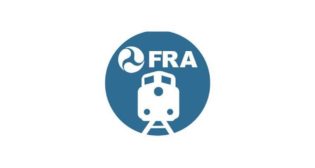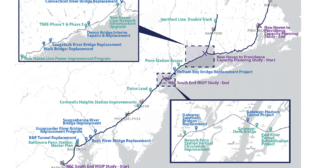
A failure to communicate—again
Written by Doug RiddellI began using a CPAP machine in 2008—four years before I retired from my career as a locomotive engineer—and I continue to do so religiously. I didn’t have to be badgered or threatened. It wasn’t made a condition of my continued employment. My motive was and remains strictly self serving: I want to live.
This all began when a friend who worked at NBC frantically called to inform me that a mutual friend, network anchor and reporter Tim Russert, had died suddenly from heart failure. Knowing that I’d complained of tiredness and shortness of breath simply walking the relatively short distance from my Capitol Hill hotel to work at Washington Union Station, my friend plaintively urged me to see my doctor as well. I did, and as a result, stents were inserted that fully open three partially blocked arteries before I might have suffered the same fate.
In addition to diet, exercise, regular doctor visits and medication, my cardiologist also wisely ordered a study that disclosed I had obstructive sleep apnea (OSA). It was explained to me that not only did I stop breathing frequently during the night, but as a result, I wasn’t truly getting my rest, no matter how long I slept.
This was long before sleep disorders were found to have significantly contributed to incidents involving a couple of early morning commuter services as well as a number of freight train collisions that occurred for no apparent reason other than human error. Sleep studies are now mandatory, but as so often happens in our industry, when implementing new regulations, the manner in which the issue is presented to employees can and does evolve into just another divisive barrier that separates management from employees, if allowed to do so. It’s perceived as just another rule to be used to make workers fear for the loss of their livelihood. An increasing portion of the workforce is former military personnel, accustomed to taking orders without question, but even they become apprehensive and suspicious.
A win-win situation for everyone has been wasted. An opportunity to identify sleep apnea in its larger context—as a life-threatening health condition—has so far been fumbled on two fronts, according to working railroaders with whom I’ve been in contact. Not only is it viewed as yet another hurdle necessary to remain employed, but it would appear that the infrastructure necessary to successfully implement the program is either non-existent, or the rules are being made up from one day to the next, with little or no thought of informing those affected.
I always considered my thorough annual physical to have been a benefit, as well as a requirement. Many people never seek medical help until it’s too late. I’m equally grateful that my union-negotiated healthcare foots the bill. Railroad healthcare, in fact, covers the cost of the initial sleep apnea study, follow-up visits, the CPAP machine, and its periodic replacement parts and maintenance. It’s that simple—or, at least it should be. Employees have discovered that some physicians appear totally unaware that the purpose of their appointment is to comply with a workplace requirement. Even when being presented with pages of written instructions and billing directions from the railroad’s medical department, many doctors have reportedly questioned insurance coverage for the service and demanded that employees submit copays.
And it gets worse.
Since some railroaders spend their layover time hundreds of miles away from home for days on end, their healthcare policy stipulates that when requested by the employee, a second CPAP machine, specifically designed for travel, is covered. Medical equipment providers (not the manufacturers, but local businesses that offer CPAP machines) refuse to bill the insurance company, noting that an additional piece of equipment is classified as a “luxury” item, and as such, is not covered. The most lame excuse offered by one provider was, “We don’t have a code that covers a second machine, so we can’t bill your insurance.”
The employees, armed with written statements from railroad healthcare, are told that they must pay for the item out of pocket—$1,000 immediately, and $200 every six months for maintenance, plus the cost of replacement parts, which also runs into the hundreds of dollars. Now, I’m no businessman, but if I was made aware of the potential of supplying thousands of CPAP machines to railroaders, and creating long-term contracts for replacement parts and upkeep, I don’t think I could look such a lucrative proposition in the mouth and walk away. Someone is not being provided with the facts. It’s not up to the individual railroad employee to facilitate a business relationship between his or her employer, the healthcare provider, the CPAP manufacturer and its local distributor.
And it gets even worse.
There are employees who are receiving certified letters from the railroad’s medical department warning that monitored CPAP usage does not meet thresholds, and that if not corrected, the individual will be medically disqualified and terminated. Standards need to be published; employees must be notified in order to comply. “We’re going with what the doctors say,” was the response elicited from one railroad’s medical office. Well, what do the doctors say? While the educational levels of individuals entering railroad employment are commensurate with the general population, operating employees are hearty souls used to hard work during unpredictable tours of duty hours in any weather. They’re neither medical students nor mind readers.
A smart railroad manager might evaluate the implications posed by inattentiveness of workers diagnosed with sleep apnea and formulate a plan to make the workforce aware of this risk to their personal health, as well as the potential negative impact on the company and the possible danger to the general public. That smart manager might also delegate authority to the appropriate department heads to develop and make clear procedures and standards that insure the road ahead is paved with more than good intentions. Before such a program is set into motion, everyone affected should understand their role and afterward receive adequate encouragement and guidance that will make the initiative successful.
I’m an optimist. I believe with a little help, good will is contagious.
The grandson of a C&O Railroad conductor, Richmond native, and Virginia Commonwealth University mass communications graduate, Doug Riddell is a retired locomotive engineer and Amtrak company photographer, hired initially as a switchman by the Seaboard Coast Line Railroad in 1977. Riddell was a radio and television broadcaster who still does public speaking and commercial voiceover work, and is occasionally called upon to comment on railroad-related topics for network and cable television news. His exploits have served as the nexus for decades of anecdotal glimpses into the life of working railroaders that have found their way into books, magazines and documentaries. A published author, Doug’s first 1999 volume, “From The Cab: Stories From A Locomotive Engineer,” was an outgrowth of his monthly “From The Cab” column in Passenger Train Journal and RailNews. He recently completed a poignant yet comical look at the late Eugene Garfield’s original auto-train, and work is progressing on the history of its successor, Amtrak’s Auto Train. Residing in Ashland, Va., where Amtrak and CSX trains ply the main line through the center of the picturesque southern college town, Doug and his wife, Sandy, a retired educator, are first-time grandparents of twin boys, whose father, Ryan, follows in his father’s footsteps at the throttle of the Auto Train and other Amtrak runs.



